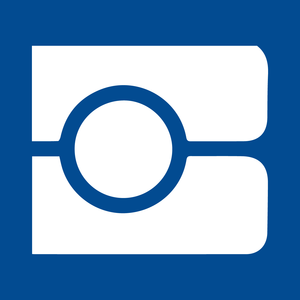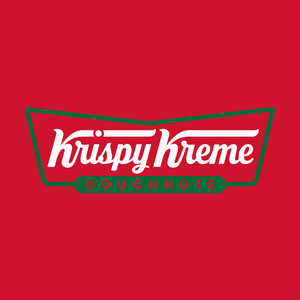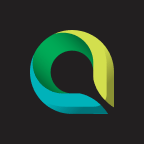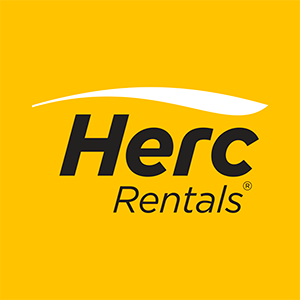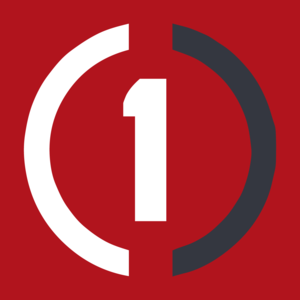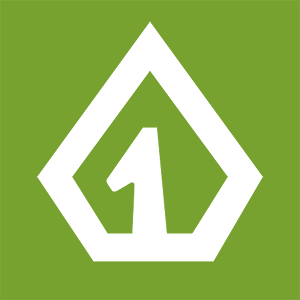
Karat Packaging (KRT)
We aren’t fans of Karat Packaging. Its growth has decelerated and its failure to generate meaningful free cash flow makes us question its prospects.― StockStory Analyst Team
1. News
2. Summary
Why Karat Packaging Is Not Exciting
Founded as Lollicup, Karat Packaging (NASDAQ: KRT) distributes and manufactures environmentally-friendly disposable foodservice packaging solutions.
- Lacking free cash flow limits its freedom to invest in growth initiatives, execute share buybacks, or pay dividends
- A consolation is that its earnings growth has beaten its peers over the last four years as its EPS has compounded at 19.2% annually


Karat Packaging doesn’t meet our quality standards. You should search for better opportunities.
Why There Are Better Opportunities Than Karat Packaging
High Quality
Investable
Underperform
Why There Are Better Opportunities Than Karat Packaging
At $22.44 per share, Karat Packaging trades at 14.2x forward P/E. Karat Packaging’s valuation may seem like a bargain, especially when stacked up against other industrials companies. We remind you that you often get what you pay for, though.
Cheap stocks can look like great bargains at first glance, but you often get what you pay for. These mediocre businesses often have less earnings power, meaning there is more reliance on a re-rating to generate good returns - an unlikely scenario for low-quality companies.
3. Karat Packaging (KRT) Research Report: Q3 CY2025 Update
Foodservice packaging supplier Karat Packaging (NASDAQ:KRT) met Wall Streets revenue expectations in Q3 CY2025, with sales up 10.4% year on year to $124.5 million. The company expects next quarter’s revenue to be around $113.8 million, coming in 1.7% above analysts’ estimates. Its non-GAAP profit of $0.37 per share was 5.1% below analysts’ consensus estimates.
Karat Packaging (KRT) Q3 CY2025 Highlights:
- Revenue: $124.5 million vs analyst estimates of $124.1 million (10.4% year-on-year growth, in line)
- Adjusted EPS: $0.37 vs analyst expectations of $0.39 (5.1% miss)
- Adjusted EBITDA: $13.05 million vs analyst estimates of $13.01 million (10.5% margin, in line)
- Revenue Guidance for Q4 CY2025 is $113.8 million at the midpoint, above analyst estimates of $111.9 million
- Operating Margin: 6.9%, down from 10% in the same quarter last year
- Free Cash Flow was -$2.51 million, down from $18.63 million in the same quarter last year
- Market Capitalization: $509.6 million
Company Overview
Founded as Lollicup, Karat Packaging (NASDAQ: KRT) distributes and manufactures environmentally-friendly disposable foodservice packaging solutions.
The company's product offerings span several brands tailored to specific market needs. Karat, the primary brand, offers a wide array of disposable products ranging from cups to containers. Karat Earth extends this range with eco-friendly options, promoting sustainability with biodegradable and compostable products. Additionally, Tea Zone caters to the bubble tea market with a selection of high-quality teas and syrups, while Total Clean provides a variety of janitorial products.
Karat Packaging generates revenue by selling these products to food service operators, distributors, and large restaurant chains throughout the United States. The business model capitalizes on recurring revenue streams from ongoing supply agreements, supported by a cost structure that balances fixed manufacturing investments with variable costs linked to materials and distribution. This strategy not only meets market demand for disposable solutions but also aligns with increasing environmental awareness among consumers.
4. Specialty Equipment Distributors
Historically, specialty equipment distributors have boasted deep selection and expertise in sometimes narrow areas like single-use packaging or unique lighting equipment. Additionally, the industry has evolved to include more automated industrial equipment and machinery over the last decade, driving efficiencies and enabling valuable data collection. Specialty equipment distributors whose offerings keep up with these trends can take share in a still-fragmented market, but like the broader industrials sector, this space is at the whim of economic cycles that impact the capital spending and manufacturing propelling industry volumes.
A public competitor in the disposable foodservice products sector is Pactiv Evergreen (NASDAQ:PTVE) while two prominent private competitors are Dart Container and WinCup.
5. Revenue Growth
Reviewing a company’s long-term sales performance reveals insights into its quality. Any business can put up a good quarter or two, but many enduring ones grow for years. Over the last five years, Karat Packaging grew its sales at a solid 10% compounded annual growth rate. Its growth beat the average industrials company and shows its offerings resonate with customers.
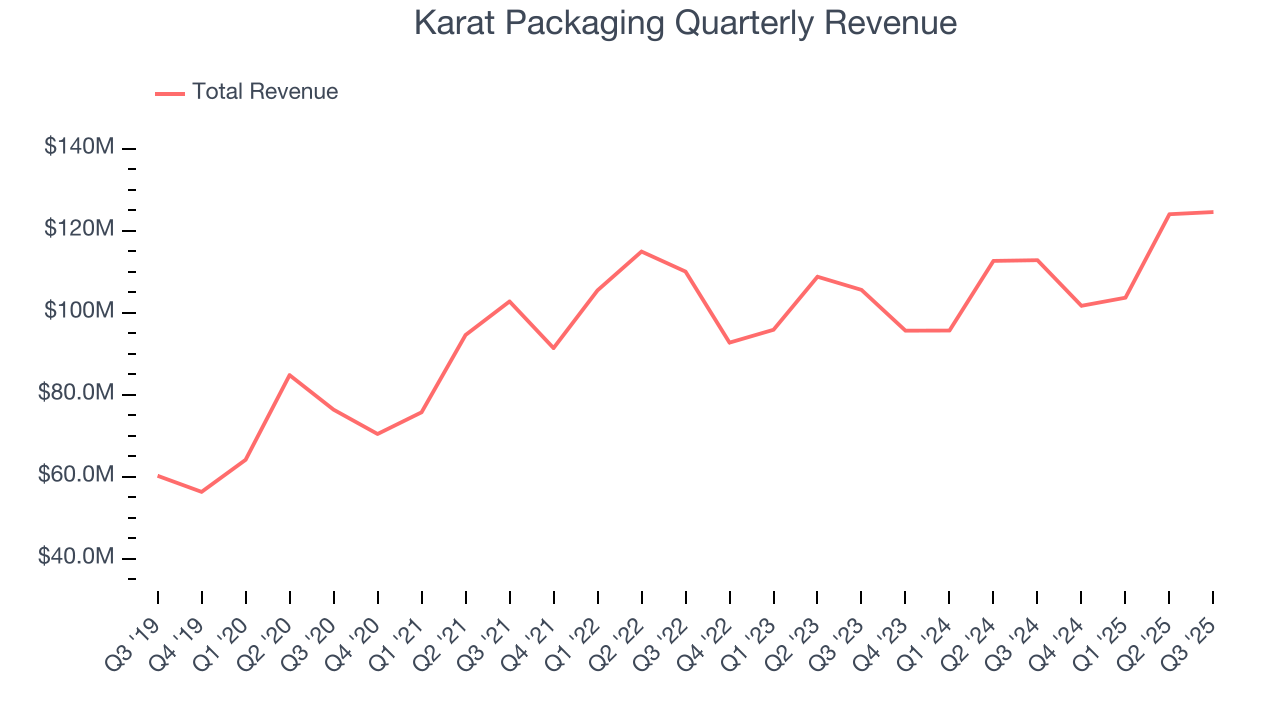
We at StockStory place the most emphasis on long-term growth, but within industrials, a half-decade historical view may miss cycles, industry trends, or a company capitalizing on catalysts such as a new contract win or a successful product line. Karat Packaging’s recent performance shows its demand has slowed as its annualized revenue growth of 6.1% over the last two years was below its five-year trend. 
This quarter, Karat Packaging’s year-on-year revenue growth was 10.4%, and its $124.5 million of revenue was in line with Wall Street’s estimates. Company management is currently guiding for a 12% year-on-year increase in sales next quarter.
Looking further ahead, sell-side analysts expect revenue to grow 7.4% over the next 12 months, similar to its two-year rate. While this projection suggests its newer products and services will spur better top-line performance, it is still below average for the sector.
6. Gross Margin & Pricing Power
Cost of sales for an industrials business is usually comprised of the direct labor, raw materials, and supplies needed to offer a product or service. These costs can be impacted by inflation and supply chain dynamics.
Karat Packaging’s gross margin is good compared to other industrials businesses and signals it sells differentiated products, not commodities. As you can see below, it averaged an impressive 34.9% gross margin over the last five years. Said differently, Karat Packaging paid its suppliers $65.11 for every $100 in revenue. 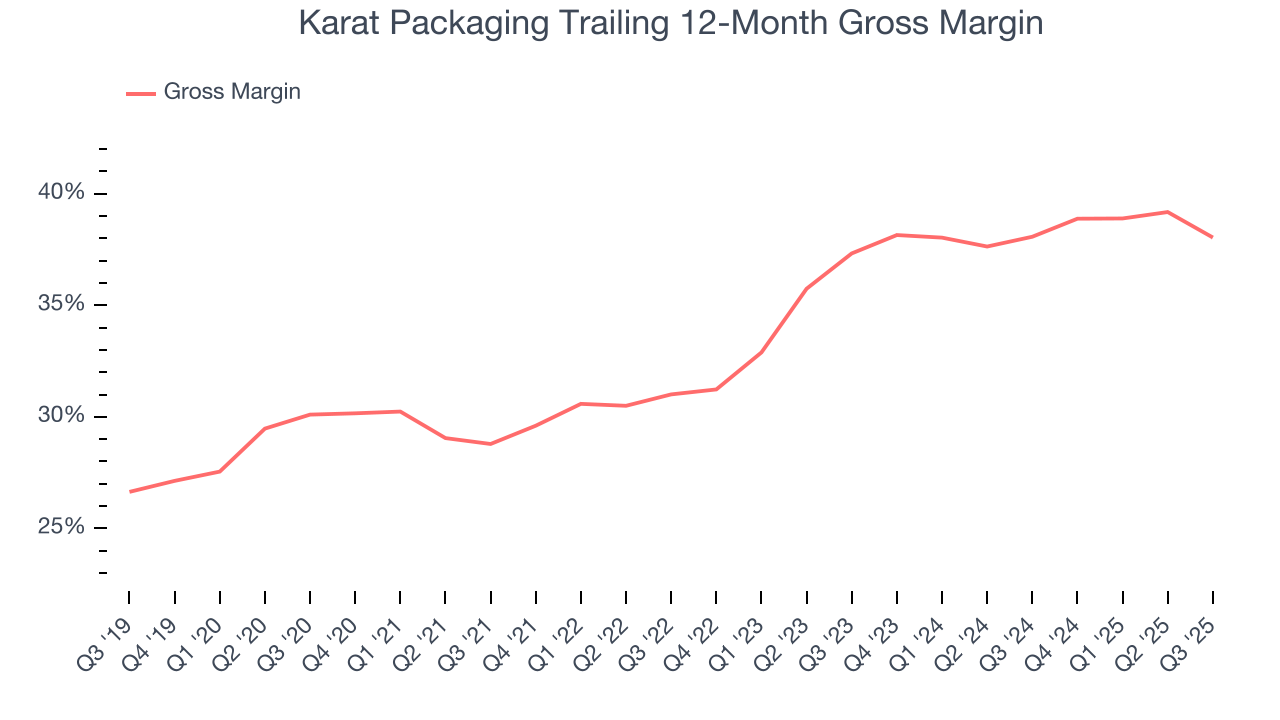
Karat Packaging produced a 34.5% gross profit margin in Q3, marking a 4.1 percentage point decrease from 38.6% in the same quarter last year. On a wider time horizon, the company’s full-year margin has remained steady over the past four quarters, suggesting its input costs (such as raw materials and manufacturing expenses) have been stable and it isn’t under pressure to lower prices.
7. Operating Margin
Karat Packaging has done a decent job managing its cost base over the last five years. The company has produced an average operating margin of 8.6%, higher than the broader industrials sector.
Looking at the trend in its profitability, Karat Packaging’s operating margin rose by 3.6 percentage points over the last five years, as its sales growth gave it operating leverage.
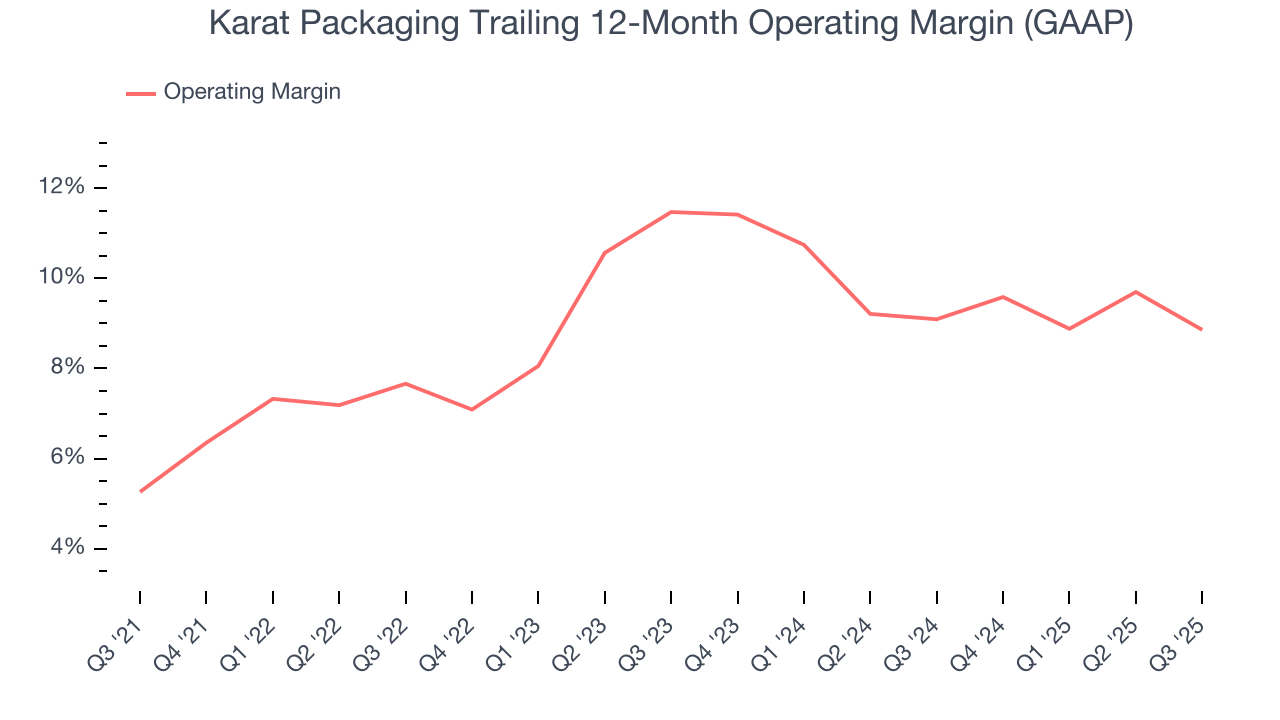
This quarter, Karat Packaging generated an operating margin profit margin of 6.9%, down 3.1 percentage points year on year. Since Karat Packaging’s gross margin decreased more than its operating margin, we can assume its recent inefficiencies were driven more by weaker leverage on its cost of sales rather than increased marketing, R&D, and administrative overhead expenses.
8. Earnings Per Share
Revenue trends explain a company’s historical growth, but the long-term change in earnings per share (EPS) points to the profitability of that growth – for example, a company could inflate its sales through excessive spending on advertising and promotions.
Karat Packaging’s full-year EPS grew at an astounding 19.2% compounded annual growth rate over the last four years, better than the broader industrials sector.
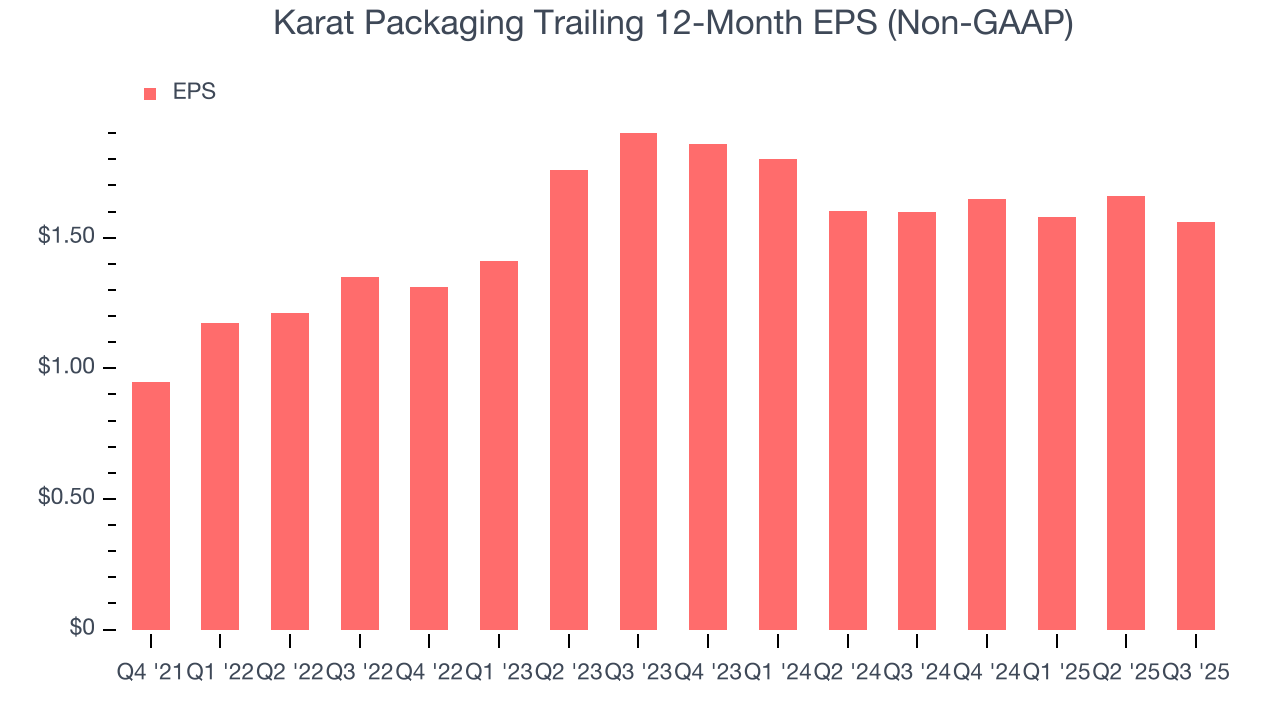
Like with revenue, we analyze EPS over a shorter period to see if we are missing a change in the business.
Sadly for Karat Packaging, its EPS declined by 9.4% annually over the last two years while its revenue grew by 6.1%. This tells us the company became less profitable on a per-share basis as it expanded.
We can take a deeper look into Karat Packaging’s earnings to better understand the drivers of its performance. Karat Packaging’s operating margin has declined over the last two yearswhile its share count has grown 1%. This means the company not only became less efficient with its operating expenses but also diluted its shareholders. 
In Q3, Karat Packaging reported adjusted EPS of $0.37, down from $0.47 in the same quarter last year. This print missed analysts’ estimates, but we care more about long-term adjusted EPS growth than short-term movements. Over the next 12 months, Wall Street expects Karat Packaging’s full-year EPS of $1.56 to grow 12.2%.
9. Cash Is King
Free cash flow isn't a prominently featured metric in company financials and earnings releases, but we think it's telling because it accounts for all operating and capital expenses, making it tough to manipulate. Cash is king.
Karat Packaging has shown mediocre cash profitability over the last five years, giving the company limited opportunities to return capital to shareholders. Its free cash flow margin averaged 5.5%, subpar for an industrials business.
Taking a step back, an encouraging sign is that Karat Packaging’s margin expanded by 7.6 percentage points during that time. The company’s improvement shows it’s heading in the right direction, and we can see it became a less capital-intensive business because its free cash flow profitability rose more than its operating profitability.
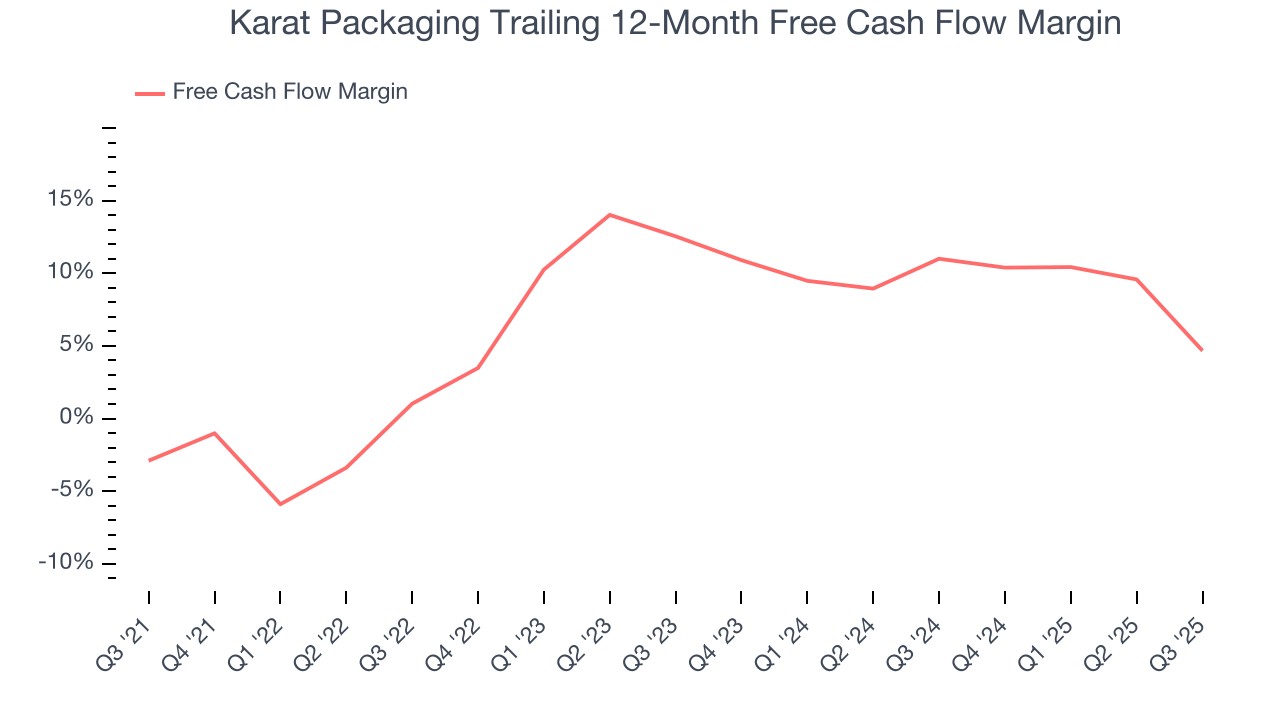
Karat Packaging burned through $2.51 million of cash in Q3, equivalent to a negative 2% margin. The company’s cash flow turned negative after being positive in the same quarter last year, but we wouldn’t read too much into the short term because investment needs can be seasonal, leading to temporary swings. Long-term trends carry greater meaning.
10. Return on Invested Capital (ROIC)
EPS and free cash flow tell us whether a company was profitable while growing its revenue. But was it capital-efficient? Enter ROIC, a metric showing how much operating profit a company generates relative to the money it has raised (debt and equity).
Although Karat Packaging hasn’t been the highest-quality company lately, it historically found a few growth initiatives that worked out well. Its five-year average ROIC was 17%, impressive for an industrials business.
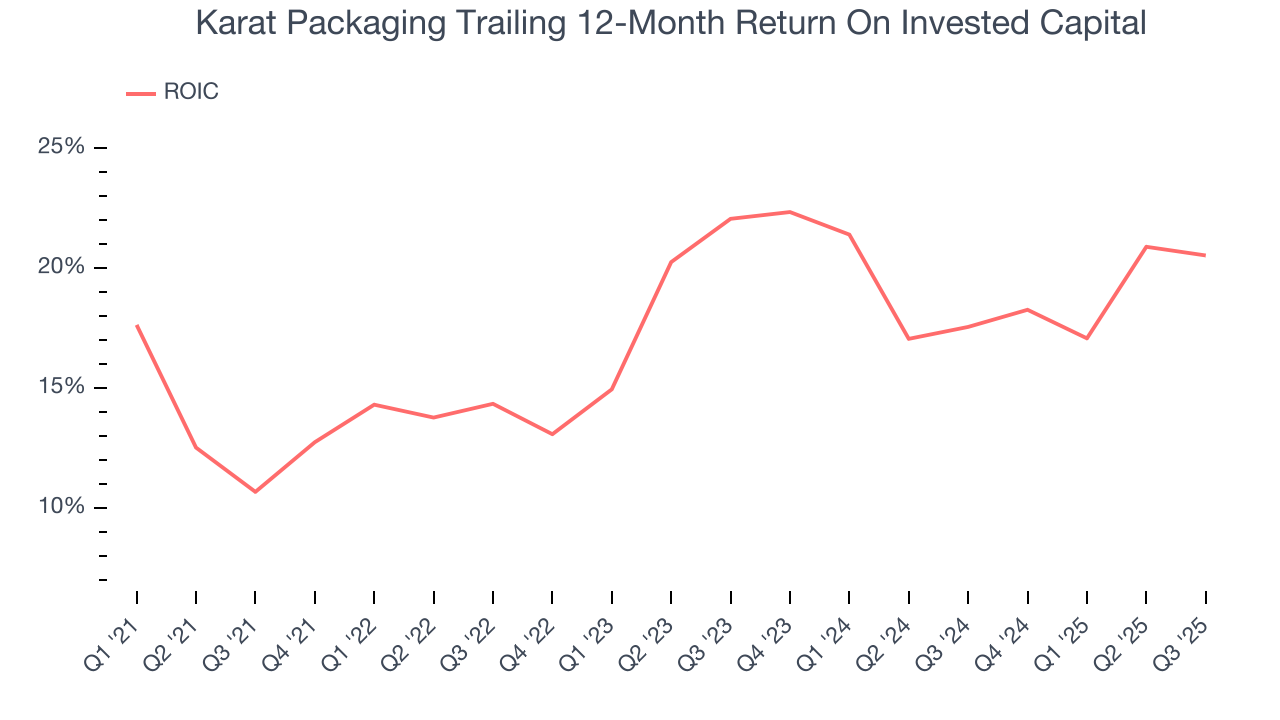
We like to invest in businesses with high returns, but the trend in a company’s ROIC is what often surprises the market and moves the stock price. Fortunately, Karat Packaging’s has increased over the last few years. This is a good sign, and if its returns keep rising, there’s a chance it could evolve into an investable business.
11. Balance Sheet Assessment
Businesses that maintain a cash surplus face reduced bankruptcy risk.

Karat Packaging is a profitable, well-capitalized company with $43.97 million of cash and no debt. This position is 8.6% of its market cap and gives it the freedom to borrow money, return capital to shareholders, or invest in growth initiatives. Leverage is not an issue here.
12. Key Takeaways from Karat Packaging’s Q3 Results
It was encouraging to see Karat Packaging’s revenue guidance for next quarter beat analysts’ expectations. On the other hand, its EPS missed. Overall, this was a softer quarter. The stock traded down 1.7% to $23.60 immediately after reporting.
13. Is Now The Time To Buy Karat Packaging?
Updated: December 3, 2025 at 9:12 PM EST
The latest quarterly earnings matters, sure, but we actually think longer-term fundamentals and valuation matter more. Investors should consider all these pieces before deciding whether or not to invest in Karat Packaging.
Karat Packaging doesn’t top our investment wishlist, but we understand that it’s not a bad business. First off, its revenue growth was solid over the last five years and is expected to accelerate over the next 12 months. And while Karat Packaging’s projected EPS for the next year is lacking, its rising cash profitability gives it more optionality.
Karat Packaging’s P/E ratio based on the next 12 months is 14.2x. This valuation multiple is fair, but we don’t have much faith in the company. We're pretty confident there are more exciting stocks to buy at the moment.
Wall Street analysts have a consensus one-year price target of $28.50 on the company (compared to the current share price of $22.44).

